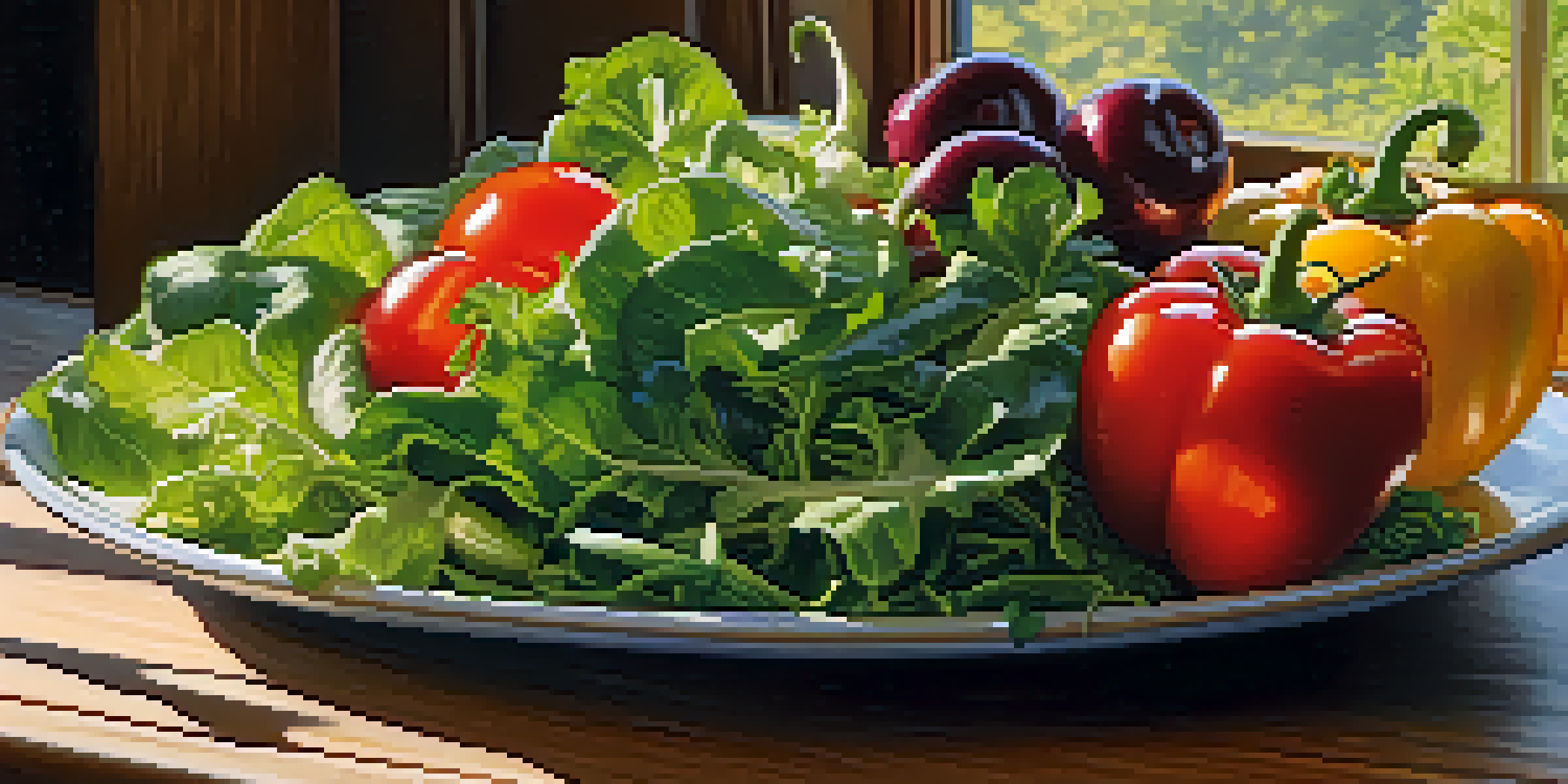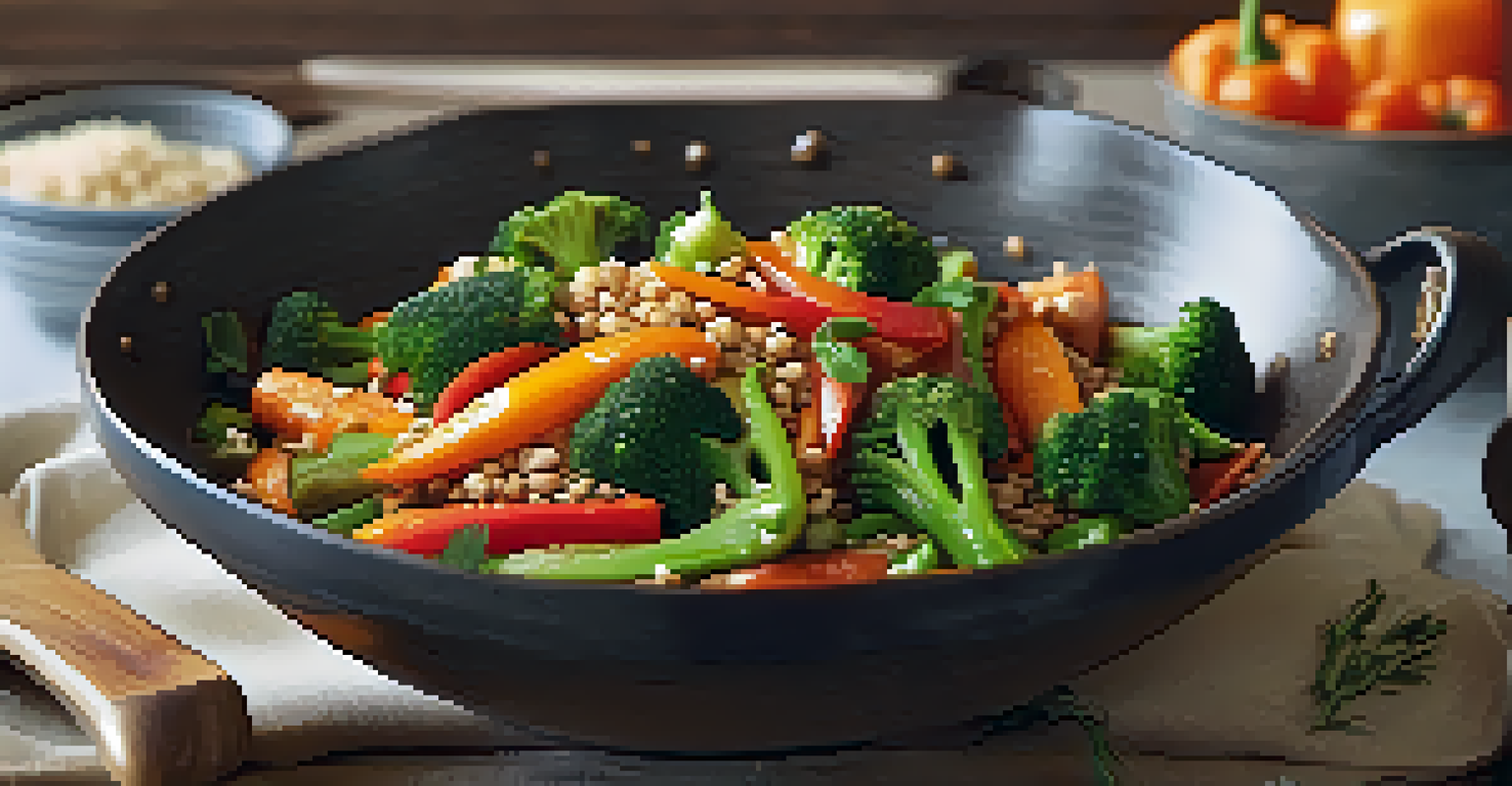Raw Food vs. Cooked: What’s Best for Athletic Performance?

Understanding Raw and Cooked Foods for Athletes
When it comes to nutrition, athletes often find themselves debating between raw and cooked foods. Raw foods include fruits, vegetables, nuts, and seeds that retain their natural state, while cooked foods have undergone heat treatment, altering their texture and nutritional profile. Each type offers unique benefits that can influence athletic performance. Knowing the differences is crucial for athletes looking to optimize their diets.
Let food be thy medicine and medicine be thy food.
Raw foods are often praised for their high enzyme content and vitamins, which can be diminished through cooking. For instance, a raw carrot retains more vitamin C compared to a cooked one, making it a nutritious snack for energy. On the flip side, cooking can enhance the digestibility of certain foods, like tomatoes, which release more lycopene when heated. This balance is key in determining the best diet for athletic performance.
Ultimately, the choice between raw and cooked foods isn't black and white. Many athletes find that a combination of both works best for their individual needs and preferences. This hybrid approach allows for a diverse intake of nutrients, maximizing their performance potential.
Nutritional Benefits of Raw Foods
Raw foods are often rich in nutrients, providing a plethora of vitamins, minerals, and enzymes that can enhance athletic performance. For example, leafy greens and fresh fruits are packed with antioxidants, which help reduce inflammation and support recovery. Eating raw also means consuming fewer processed ingredients, leading to cleaner energy sources for athletes.

Additionally, raw foods tend to have higher water content, which is essential for hydration. This is particularly important for athletes who lose fluids during intense workouts. Foods like cucumbers and watermelon not only hydrate but also provide essential electrolytes that support overall performance.
Raw and Cooked Foods Benefits
Athletes can enhance their performance by understanding the unique nutritional benefits of both raw and cooked foods.
Moreover, the fiber in raw foods aids digestion, ensuring that athletes can efficiently absorb all the nutrients they consume. This can lead to better energy levels and improved stamina during workouts, making raw foods a compelling choice for those serious about their athletic endeavors.
The Advantages of Cooked Foods
Cooking foods can unlock additional health benefits that raw foods may not provide. For instance, cooking can break down tough cell walls in vegetables, allowing for better nutrient absorption. This is particularly true for foods like spinach and carrots, where cooking enhances the bioavailability of key nutrients such as iron and beta-carotene.
The first wealth is health.
Cooked foods can also be easier on the digestive system, especially for athletes with sensitive stomachs. The cooking process can help to neutralize certain anti-nutrients, like oxalates and lectins, found in some raw foods that might hinder nutrient absorption. This can result in a more efficient digestive process, crucial for athletes needing to maximize their nutrient intake.
Furthermore, cooking can create a variety of flavors and textures that make meals more enjoyable and satisfying. For athletes, the psychological aspect of enjoying meals can play a significant role in maintaining a consistent diet, which is essential for long-term performance.
How Cooking Affects Nutrient Levels
One of the primary concerns about cooked foods is nutrient loss during the cooking process. For example, water-soluble vitamins like vitamin C and some B vitamins can diminish when exposed to heat. However, the extent of this loss depends on the cooking method used, with steaming generally preserving more nutrients than boiling.
Conversely, some nutrients actually become more available through cooking. The process can enhance the absorption of certain antioxidants and phytonutrients, making cooked foods beneficial in a balanced diet. For example, the cooking of mushrooms can increase their ergothioneine content, a powerful antioxidant beneficial for athletes.
Balance is Key for Nutrition
Finding the right balance between raw and cooked foods allows athletes to optimize their nutrient intake and energy levels.
This presents a dilemma for athletes: how to maximize nutrient intake while enjoying both raw and cooked foods. Understanding the cooking methods that preserve nutrients while also providing health benefits can help athletes make informed choices about their diets.
Finding the Right Balance for Athletes
The key to optimizing athletic performance lies in finding the right balance between raw and cooked foods. A diet that includes a variety of both can provide a wide range of nutrients essential for training and recovery. For instance, starting a meal with a fresh salad (raw) and following it up with a hearty vegetable stir-fry (cooked) can be a satisfying and nutritious combination.
Athletes should listen to their bodies and pay attention to how they feel after consuming raw versus cooked meals. Some may thrive on a predominantly raw diet, while others might find that cooked foods support their energy levels better. Experimenting with different combinations can help uncover what works best for each individual.
Additionally, seasonal and local ingredients can influence the choice between raw and cooked. In the summer, fresh produce may be more appealing and nutritious raw, while winter months might call for comforting cooked meals. Embracing this flexibility can lead to a more enjoyable and effective nutritional strategy.
The Role of Personal Preference in Diet Choices
Personal preference plays a significant role in dietary choices and can affect an athlete's compliance with their nutrition plan. Some individuals may simply enjoy the taste and texture of raw foods, while others may prefer the warmth and comfort of cooked meals. Finding enjoyment in what you eat is crucial for maintaining a sustainable diet.
It’s also important to consider lifestyle factors. Busy athletes, for instance, might find that cooked meals, which can be prepared in advance, fit better into their schedules than raw food preparations that require more time and effort. This practicality can help them stick to their nutritional goals without feeling overwhelmed.
Personal Preference Matters
An athlete's enjoyment and lifestyle play a crucial role in determining their successful diet choices for performance.
Ultimately, a successful diet for athletic performance should align with both nutritional needs and personal enjoyment. By respecting individual tastes and lifestyle demands, athletes can create a balanced meal plan that truly supports their goals.
Conclusion: Striking the Right Nutritional Balance
In the debate of raw food versus cooked, there isn't a one-size-fits-all answer for athletes. Both have their unique advantages, and understanding these can guide individuals in crafting a diet that enhances their performance. The priority should always be on a balanced approach that includes a mix of both raw and cooked foods.
Athletes should consider factors such as nutrient absorption, personal preference, and lifestyle when deciding how to incorporate these foods into their diets. Regularly evaluating how different foods impact energy levels and overall performance can provide valuable insights for optimizing nutrition.

Ultimately, the best diet is one that is enjoyable, sustainable, and tailored to the individual’s needs. By embracing both raw and cooked foods, athletes can fuel their bodies effectively and thrive in their performance endeavors.